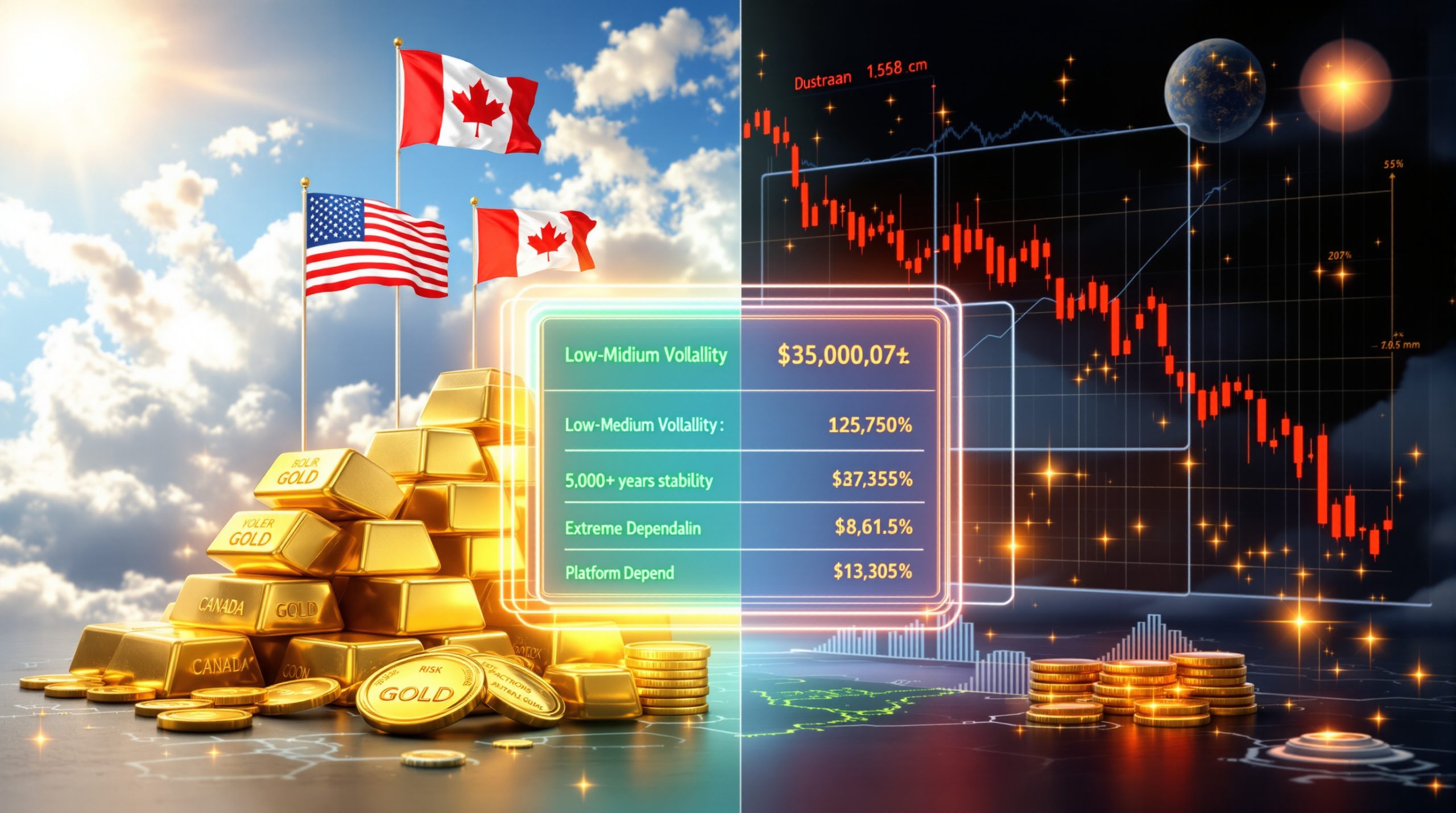Understanding Capital Expenditure Super Cycles
A capex super cycle represents an extended period of dramatically increased infrastructure and technology investments that spans multiple industries and nations simultaneously. Unlike conventional business cycles lasting 2-3 years, these transformative periods extend across 5-15 years, fundamentally reshaping economic landscapes through sustained heavy spending on productive capacity, technological advancement, and strategic infrastructure development.
The current environment presents compelling evidence of such a cycle emerging, driven primarily by artificial intelligence infrastructure requirements and geopolitical competition. Historical precedents demonstrate how these cycles create opportunities for patient investors while demanding careful risk assessment.
Key Characteristics of CapEx Super Cycles
Multi-Sector Investment Surge
Capital expenditure super cycles distinguish themselves through coordinated deployment across multiple industries rather than isolated sector-specific buildouts. Government and private sector coordination occurs through regulatory frameworks, strategic incentives, and aligned national security priorities, creating unprecedented scale and scope.
Technology-driven transformation requirements generate non-negotiable infrastructure imperatives. The progression toward artificial general intelligence creates urgent investment needs across semiconductor manufacturing, hyperscale data centers, energy systems, and transmission networks that cannot be deferred or substituted.
Extended Duration and Scale
Investment periods lasting multiple years require sustained multi-year project execution and financing structures. The U.S. CHIPS and Science Act provides $76 billion through 2032, while the European Chips Act commits €43 billion, demonstrating the scale of government strategic programs supporting this cycle.
Cross-border competitive dynamics intensify resource allocation decisions. Supply chain restructuring imperatives create coordination effects that ripple across global markets, distinguishing capex super cycles from single-industry investment waves.
What Triggers a CapEx Super Cycle?
Technological Disruption as the Primary Catalyst
Revolutionary artificial intelligence breakthroughs exemplify technology-driven investment imperatives. Modern AI applications require entirely new infrastructure categories, from specialized semiconductor fabrication facilities costing $20-30 billion each to hyperscale data centers demanding hundreds of megawatts of power consumption.
Advanced semiconductor production focuses on 3-nanometer and sub-3-nanometer processes, with next-generation nodes including 2nm, 1.4nm, and 1nm in development. These facilities represent the most capital-intensive manufacturing projects in human history, requiring specialized equipment like extreme ultraviolet lithography systems costing $200+ million per unit.
Industry observers estimate artificial general intelligence achievement within 5-7 years, creating non-deferrable infrastructure requirements across the technology stack. This timeline compression intensifies capital allocation urgency across competing nations and corporations.
Geopolitical Competition and Strategic Assets
Nations increasingly classify semiconductor manufacturing capacity, critical mineral supply chains, and advanced computing infrastructure as matters of national security rather than purely commercial concerns. This strategic reframing justifies government intervention through direct subsidies, regulatory requirements, and long-term supply agreements.
The U.S. CHIPS Act ($76 billion) and European Chips Act (€43 billion) demonstrate how strategic competition drives massive capital allocation decisions beyond normal market forces. These programs reflect recognition that technology leadership correlates directly with economic and military advantage.
Furthermore, supply chain resilience concerns have elevated dependencies on single-source suppliers to strategic vulnerabilities. Geopolitical tensions create investment requirements for domestic and allied-nation resource development, reducing adversarial leverage through supply chain diversification.
Resource Scarcity and Energy Transition
Climate change imperatives create investment requirements that align with rather than compete with technology infrastructure buildouts. The transition to renewable energy systems and artificial intelligence simultaneously creates demand pressures across multiple resource categories.
Silver has received official U.S. critical mineral designation, elevating it from industrial commodity to strategic resource status. This classification reflects growing recognition of essential materials required for solar manufacturing, electrical contacts, and advanced technology applications.
In addition, energy transition strategies span base load generation (nuclear, natural gas) and renewable sources (solar, wind) with associated storage and transmission systems. These coordinated multi-trillion-dollar investment cycles create sustained demand across commodities and construction sectors.
The Current AI-Driven CapEx Super Cycle
Semiconductor Manufacturing Revolution
Advanced Node Requirements
Current leading-edge production focuses on 3-nanometer processes as of 2025, with development proceeding on 2nm, 1.4nm, and 1nm nodes. These advanced processes require fabrication facilities costing $20-30 billion per facility, representing among the most capital-intensive manufacturing projects in industrial history.
Global capacity requirements project the need for multiple dozen new fabrication facilities over the next decade (2025-2035). This unprecedented buildout reflects artificial intelligence compute demand that cannot be satisfied through existing manufacturing capacity.
Equipment and Infrastructure Specifications
Manufacturing equipment requirements include:
- Extreme ultraviolet lithography systems: $200+ million per unit
- Deposition and etching equipment: $50-150 million per system
- Inspection and metrology systems: $20-50 million per system
- Facility construction timelines: 3-5 years typical
- Annual operating costs: Hundreds of millions per facility
Data Center Infrastructure Explosion
Hyperscale Facility Development
AI model training and deployment require data centers with power consumption measured in hundreds of megawatts per individual facility. These installations demand specialized cooling infrastructure, redundant power supplies, and high-speed networking infrastructure representing billions in individual project investments.
Cooling system requirements include custom-engineered thermal management solutions, while network infrastructure demands multi-100 gigabit interconnects with sub-millisecond latency capabilities. Geographic distribution requirements multiply these infrastructure investment needs across multiple regions and countries.
Technical Infrastructure Requirements
Modern hyperscale data centers require:
- Power infrastructure: 100-500 MW capacity depending on facility size
- Cooling systems: Liquid cooling and advanced heat dissipation
- Network infrastructure: Fiber optic connectivity with ultra-low latency
- Redundant power supplies: Uninterruptible power supply architecture
- Construction costs: Multiple billions per major facility
How Does Energy Infrastructure Support This Cycle?
Power Generation and Grid Modernization
Utility CapEx Acceleration
American Electric Power has committed to a $72 billion five-year investment plan (2023-2028) focusing on transmission capacity expansion and grid reliability improvements. This represents the scale of utility infrastructure required to accommodate increased data center power demands.
Major utilities across North America have increased multi-year capital expenditure plans by 30-50% to address data center power demand growth. These investments focus on transmission capacity expansion, distribution network upgrades, and substation automation necessary for load balancing and grid stability.
Infrastructure Modernization Components
Grid modernization requirements include:
- Transmission capacity expansion: Critical bottleneck resolution
- Distribution network upgrades: Data center interconnection capability
- Substation automation: Load balancing and grid stability systems
- Smart grid technologies: Demand-responsive operations infrastructure
Critical Mineral Extraction and Processing
Strategic Resource Development
AI infrastructure requires specific materials across the technology stack. Lithium remains essential for battery storage systems supporting renewable energy integration, while rare earth elements provide permanent magnets for electric motors and generators.
Moreover, construction of a major critical minerals facility for high-purity silicon processing requires capital-intensive construction and energy-intensive production processes. Copper demand projections indicate significant increases required for electrification infrastructure, while silver's recent critical mineral designation reflects supply constraints relative to growing industrial demand.
| Critical Mineral | Primary Applications | Supply Constraints |
|---|---|---|
| Lithium | Battery storage systems | Processing capacity bottlenecks |
| Rare Earth Elements | Permanent magnets | Geographic concentration risks |
| High-Purity Silicon | Semiconductor manufacturing | Energy-intensive processing |
| Copper | Electrical infrastructure | Growing demand vs. production |
| Silver | Solar panels, electrical contacts | Critical mineral designation |
Supply Chain Resilience Building
Geopolitical supply chain vulnerabilities drive investments in domestic and allied-nation resource development. Strategic considerations include China's significant control over rare earth element processing, necessitating supply chain diversification across multiple jurisdictions.
However, US-China trade dynamics create investment requirements spanning extraction, processing, and refining capabilities to reduce strategic dependencies. Government programs support domestic production capacity development through incentives and strategic partnerships.
Which Industries Benefit Most from CapEx Super Cycles?
Technology Hardware and Infrastructure
Semiconductor Industry Benefits
The semiconductor sector captures direct benefits from government incentives totaling $76 billion in the U.S. and €43 billion in Europe. Fabrication facility construction creates sustained demand for specialized manufacturing equipment, while AI chip requirements drive capacity utilization across the industry.
Market beneficiaries include equipment manufacturers specializing in photolithography, deposition, etching, and inspection systems. Companies like Applied Materials, ASML Holding, Lam Research, and Tokyo Electron benefit from multi-billion-dollar equipment orders supporting new facility construction.
Data Center Infrastructure
Hyperscale data center development creates sustained demand for construction services, cooling systems, power infrastructure, and networking equipment. Cloud computing expansion and AI training infrastructure requirements drive billions in annual capital expenditures across major technology companies.
Networking Infrastructure Expansion
5G/6G deployment and fiber optic expansion require multi-billion-dollar infrastructure programs. Telecommunications companies invest heavily in cell tower infrastructure and fiber network buildouts to support connectivity demands across geographic regions.
Industrial Equipment and Construction
Specialized Manufacturing Equipment
Advanced semiconductor production equipment represents a highly specialized market with significant barriers to entry. Equipment manufacturers benefit from $200+ million per EUV lithography system orders, with additional demand for deposition, etching, and inspection systems.
Construction and Engineering Services
Complex facility development requires specialized engineering expertise for semiconductor fabrication plants, data centers, and power generation facilities. Engineering and construction companies with technology facility specialization capture premium project margins.
Construction timelines spanning 3-5 years for major facilities create sustained revenue streams for qualified contractors. Nuclear power plant construction and renewable energy infrastructure development provide additional growth opportunities.
Materials and Commodities
Critical Minerals and Metals
Sustained demand growth characterizes multiple commodity categories during capex super cycles. Copper price insights indicate annual demand growth projections of 5-7% through 2030, driven by electrical infrastructure expansion and transportation electrification.
Lithium demand growth reaches 15-20% annually through the end of the decade, reflecting battery manufacturing expansion for energy storage systems. Supply constraints create pricing pressures across rare earth elements required for permanent magnet applications.
Uranium benefits from global nuclear capacity additions planned through the 2030s, while silver's critical mineral classification supports sustained industrial demand growth across solar manufacturing and electrical contact applications.
What Are the Investment Implications?
Equity Market Opportunities
Infrastructure and Technology Stocks
Companies positioned within capex super cycle supply chains experience sustained revenue growth and margin expansion opportunities. According to research from Goldman Sachs, market projections suggest S&P 500 targets of 7,400-7,500 by spring 2026, with potential for 8,000 by the end of the decade.
Long-term scenario planning indicates possible peak levels of 15,000 by 2031, followed by an extended consolidation period lasting potentially through 2041. These projections reflect the transformative nature of artificial intelligence infrastructure buildouts.
Dividend Growth Potential
Utilities and infrastructure companies typically translate increased capital expenditures into rate base growth, supporting dividend increases over extended periods. American Electric Power's $72 billion investment plan exemplifies how infrastructure spending creates shareholder value through regulated return mechanisms.
Commodity and Real Asset Exposure
Critical Mineral Investments
Physical commodities and mining companies benefit from sustained demand increases and potential supply constraints during major infrastructure buildouts. Silver's recent critical mineral designation creates government strategic interest in domestic production capacity.
Furthermore, gold investment strategies face execution challenges as gold consolidates between $4,000-4,400 after significant appreciation. The transition from price appreciation to operational execution creates differentiated performance across mining equities.
Real Estate and Infrastructure
Industrial real estate suitable for data centers and manufacturing experiences significant appreciation during capex super cycles. Geographic arbitrage based on renewable energy availability, cooling water sources, and grid capacity drives facility location decisions.
How Long Do CapEx Super Cycles Last?
Historical Duration Patterns
Previous capex super cycles typically lasted 7-12 years, reflecting the time required to plan, finance, and construct major infrastructure projects. The current AI-driven cycle began around 2022 and could extend through the early 2030s based on announced investment plans.
The CHIPS Act's 100% tax deductible status for capital expenditures through January 2031 provides a specific policy endpoint that may influence cycle timing. This creates potential concentration of investment activity within the next six years.
Factors Influencing Cycle Length
Technology Maturation Rates
The pace of AI advancement toward artificial general intelligence significantly influences investment duration and intensity. Industry estimates suggesting AGI achievement within 5-7 years create urgency for infrastructure completion within specific timeframes.
Government Policy Continuity
Sustained government support through multiple political cycles affects the longevity and scale of strategic infrastructure investments. Bipartisan support for semiconductor manufacturing and AI competitiveness suggests policy continuity across administration changes.
Economic and Financial Conditions
Interest rates and capital availability influence the feasibility and timing of large-scale capital projects. Federal Reserve policy targeting overnight rates down to 275 basis points supports infrastructure financing conditions.
What Risks Should Investors Consider?
Overinvestment and Capacity Bubbles
Historical Precedents
Previous technology cycles experienced periods of excessive investment followed by capacity gluts and reduced returns. The fiber optic buildout of the late 1990s provides a cautionary example of infrastructure overinvestment during technological transitions.
Current valuations in AI-related equities reflect expectations for sustained growth that may not materialize if artificial general intelligence development encounters technical obstacles or takes longer than anticipated.
Valuation Concerns
Companies benefiting from capex super cycles may experience temporary overvaluation as markets extrapolate current growth rates indefinitely. As noted by analysts examining the AI capex super cycle, individual companies trading at 250 times price-to-sales ratios suggest significant correction potential once valuations begin to matter.
Technological Obsolescence
Rapid Innovation Cycles
Fast-moving technology sectors risk investments becoming obsolete before projects reach completion or achieve targeted returns. Semiconductor manufacturing facilities with 3-5 year construction timelines face technology evolution risks during development periods.
Competitive Disruption
New technologies or approaches may render current infrastructure investments less valuable than anticipated. Alternative computing architectures or breakthrough efficiency improvements could reduce demand for current-generation infrastructure.
Policy and Regulatory Changes
Government Support Variability
Changes in political leadership or priorities could affect continuation of strategic investment programs and incentives. However, bipartisan support for technology competitiveness suggests relative stability for core infrastructure programs.
International Trade Dynamics
Evolving trade relationships and technology transfer restrictions may impact global supply chains and investment strategies. Export controls and strategic mineral restrictions create ongoing uncertainty for international infrastructure projects.
How to Position for CapEx Super Cycle Opportunities
Diversified Exposure Strategy
Sector Allocation
Balanced exposure across technology, utilities, materials, and industrial sectors provides participation in multiple aspects of the investment cycle while reducing concentration risk. ETF-driven investing patterns among younger generations create broad-based asset appreciation potential.
Geographic Diversification
Capex super cycles involve competition between regions, making diversified geographic exposure important for capturing opportunities across different markets. U.S., European, and allied-nation infrastructure programs create multiple investment venues.
Timing and Patience Considerations
Long-Term Investment Horizon
Capex super cycles require patient capital, as infrastructure projects take years to complete and generate returns. Short-term volatility should be expected and tolerated within the context of multi-year investment cycles.
Historical debt-to-GDP reductions demonstrate precedent for reflation strategies. Post-World War II debt-to-GDP decreased from approximately 125-130% in 1945 to 35% by 1975 through economic growth rather than explicit debt reduction.
Dollar-Cost Averaging
Regular investment contributions help manage timing risk and capture periodic market corrections within broader upward trends. Frustrating consolidation patterns in assets like Bitcoin (trading between low 100s and 124) create accumulation opportunities before potential breakouts.
Future Outlook: What Comes After AI?
Emerging Technology Catalysts
Quantum Computing Infrastructure
The eventual commercialization of quantum computing may drive another wave of specialized infrastructure investments in the 2030s. Quantum systems require unique environmental controls, specialized materials, and dedicated facilities that could create the next capex super cycle.
Space Economy Development
Satellite networks, space manufacturing, and lunar resource extraction represent potential future infrastructure investment opportunities. Commercial space development may require terrestrial manufacturing and launch facilities comparable to current semiconductor buildouts.
Biotechnology and Healthcare
Personalized medicine and advanced therapeutics may require significant manufacturing and distribution infrastructure investments. Biomanufacturing facilities for cell and gene therapies represent emerging capital-intensive sectors.
Sustainability and Climate Adaptation
Climate Resilience Infrastructure
Adapting to climate change will require massive investments in flood control systems, enhanced cooling infrastructure, and resilient facility design. Existing data centers and manufacturing facilities may require significant retrofitting for climate resilience.
Circular Economy Transition
Moving toward sustainable resource use patterns demands capital investments in recycling technologies, remanufacturing systems, and waste reduction infrastructure. These transitions create opportunities for materials recovery and processing equipment manufacturers.
Investment Strategy During the Mid-2030s Transition
Preparing for the Post-Super Cycle Period
Market projections suggest potential S&P 500 peaks at 15,000 in 2031, followed by an extended period where that level may not be reached again until 2041. This scenario planning indicates a decade of challenging asset returns requiring strategic positioning adjustments.
During this anticipated transition period, deep value investments, cash positions, and real assets may outperform growth-oriented strategies. Investors should prepare for a fundamental shift in market dynamics as infrastructure buildouts complete and valuations normalize.
Core Asset Allocation Recommendations
Gold and Digital Assets
Significant portfolio allocations to gold and Bitcoin become increasingly important as store-of-value assets. Current gold consolidation between $4,000-4,400 provides accumulation opportunities for long-term positions.
Physical vs. Equity Exposure
The transition from price appreciation to operational execution in mining companies creates differentiated performance expectations. Physical precious metals may outperform mining equities as infrastructure companies face quarterly execution pressures.
Recommended allocation frameworks suggest 5% in cryptocurrencies like Bitcoin or Ethereum and 5% in gold or silver for younger investors, with 10% gold allocation for those preferring traditional precious metals exposure.
Risk Management and Market Psychology
Understanding Leverage and Deleveraging Events
The current market environment contains significant leverage across multiple asset classes. October deleveraging in Bitcoin demonstrated how quickly leveraged positions can unwind when liquidity conditions change.
Younger crypto and technology investors have limited experience with real deleveraging events, liquidity withdrawals, or collateral calls. Understanding these dynamics becomes crucial as the cycle matures and leverage unwinds.
Central Bank Policy Response
Federal Reserve policy aims to achieve overnight rates around 275 basis points (neutral level), potentially overshooting to the downside due to delayed policy response. Quantitative tightening ending in December creates 60-70 billion dollars monthly in additional liquidity through government bond purchases.
Treasury General Account drawdown of approximately $1 trillion following government reopening provides additional monetary stimulus. These liquidity conditions support risk assets through the infrastructure buildout phase.
Conclusion: Navigating the CapEx Super Cycle
The current AI-driven capex super cycle represents one of the most significant infrastructure investment periods in modern history. Understanding its drivers, beneficiaries, and risks enables investors to position portfolios for potential opportunities while managing associated challenges.
Success requires patience, diversification, and focus on companies with sustainable competitive advantages in critical infrastructure development. The $76 billion U.S. CHIPS Act and €43 billion European Chips Act provide government backing for multi-year infrastructure programs extending through the early 2030s.
Key investment themes include semiconductor manufacturing capacity, hyperscale data center infrastructure, energy system modernization, and critical mineral supply chain development. American Electric Power's $72 billion five-year investment plan exemplifies utility sector participation in this transformative cycle.
Critical mineral classifications for silver and other strategic resources create government interest in domestic production capacity. Mining companies benefit from sustained commodity demand, though execution challenges differentiate performance as the cycle matures.
The timeline toward artificial general intelligence achievement within 5-7 years creates urgency for infrastructure completion. Policy support through 100% capital expenditure tax deductibility until January 2031 aligns government incentives with technological development timelines.
Post-cycle preparation becomes increasingly important as infrastructure buildouts near completion. Historical precedent suggests potential S&P 500 consolidation periods lasting potentially through the 2040s, requiring strategic asset allocation adjustments.
Gold consolidation between $4,000-4,400 and Bitcoin consolidation patterns provide accumulation opportunities for long-term store-of-value positions. Diversified exposure across technology, utilities, materials, and industrial sectors captures multiple aspects of the investment cycle while reducing concentration risk.
The key to capitalizing on this capex super cycle lies in identifying companies with essential roles in infrastructure buildouts, sustainable business models, and management teams capable of executing complex, long-term projects successfully. As this cycle continues to unfold, maintaining perspective on both opportunities and risks will be crucial for investment success.
Are You Positioning Yourself for the Next Mining Discovery Breakthrough?
Discovery Alert's proprietary Discovery IQ model delivers real-time alerts on significant ASX mineral discoveries, helping investors capitalise on the next breakthrough in this unprecedented capex super cycle. With critical minerals like silver achieving strategic designation and infrastructure demands driving commodity requirements, explore Discovery Alert's historic discovery examples to understand how major finds can generate substantial returns and begin your 30-day free trial today.




